| Title | A µ-rhythm Matched Filter for Continuous Control of a Brain-Computer Interface. |
| Publication Type | Journal Article |
| Year of Publication | 2007 |
| Authors | Krusienski, DJ, Schalk, G, McFarland, DJ, Wolpaw, J |
| Journal | IEEE Trans Biomed Eng |
| Volume | 54 |
| Issue | 2 |
| Pagination | 273-80 |
| Date Published | 02/2007 |
| ISSN | 0018-9294 |
| Keywords | Algorithms, Cerebral Cortex, Cortical Synchronization, Electroencephalography, Evoked Potentials, Humans, Imagination, Pattern Recognition, Automated, User-Computer Interface |
| Abstract | A brain-computer interface (BCI) is a system that provides an alternate nonmuscular communication/control channel for individuals with severe neuromuscular disabilities. With proper training, individuals can learn to modulate the amplitude of specific electroencephalographic (EEG) components (e.g., the 8-12 Hz mu rhythm and 18-26 Hz beta rhythm) over the sensorimotor cortex and use them to control a cursor on a computer screen. Conventional spectral techniques for monitoring the continuousamplitude fluctuations fail to capture essential amplitude/phase relationships of the mu and beta rhythms in a compact fashion and, therefore, are suboptimal. By extracting the characteristic mu rhythm for a user, the exact morphology can be characterized and exploited as a matched filter. A simple, parameterized model for the characteristic mu rhythm is proposed and its effectiveness as a matched filter is examined online for a one-dimensional cursor control task. The results suggest that amplitude/phase coupling exists between the mu and beta bands during event-related desynchronization, and that an appropriate matched filter can provide improved performance. |
| URL | http://www.ncbi.nlm.nih.gov/pubmed/17278584 |
| DOI | 10.1109/TBME.2006.886661 |
| Alternate Journal | IEEE Trans Biomed Eng |
| PubMed ID | 17278584 |

